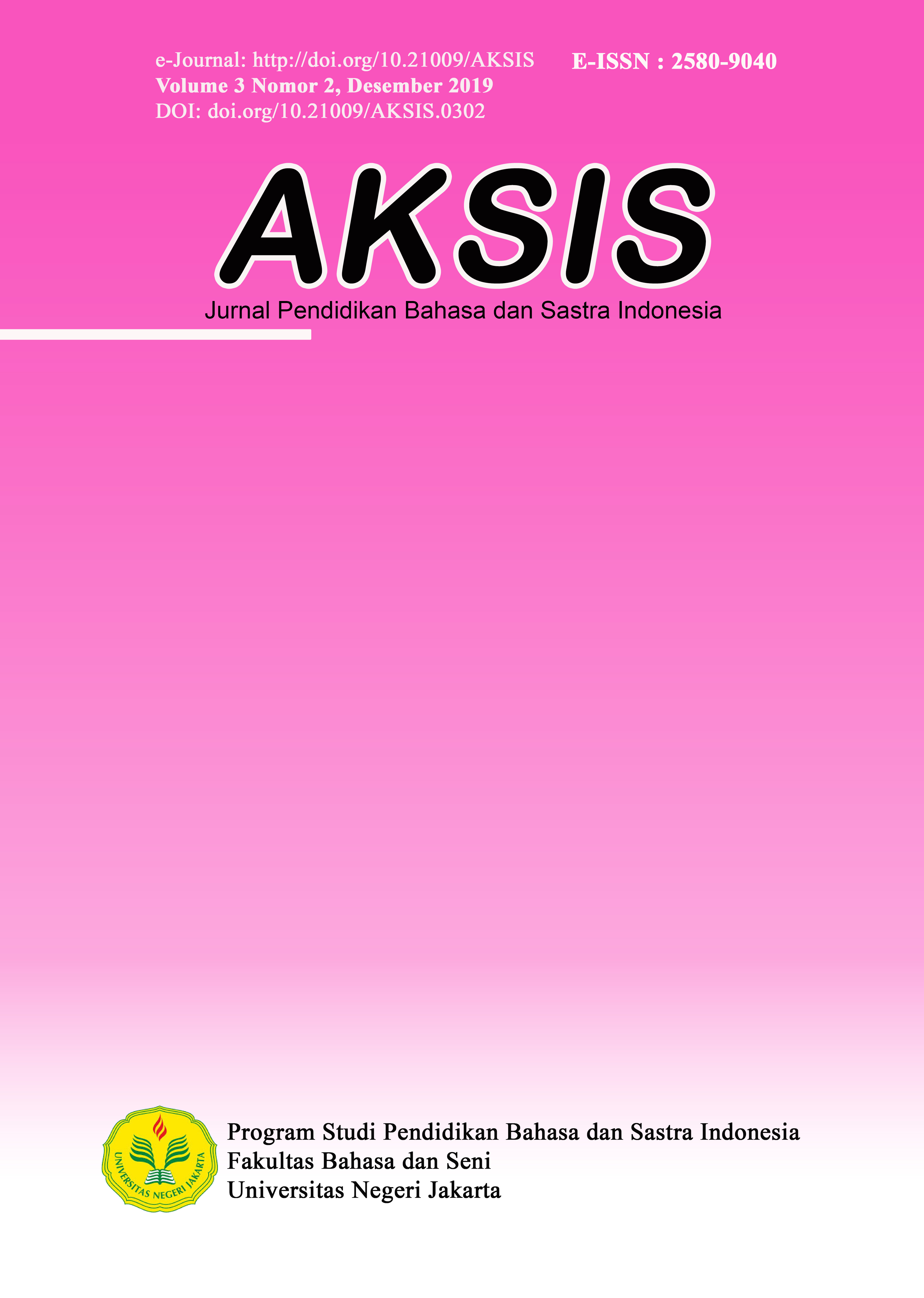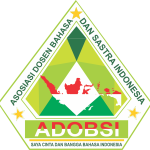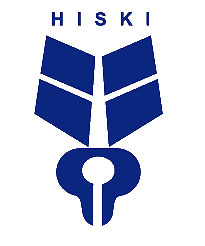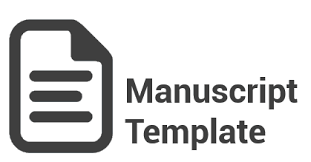Digital Text Book: A State of The Art Learning Resource to Increase Learner’s Achievement
Abstract
Digital textbook is an electronic version of printed books which has been popular in education. Several related studies had confirmed the advantages of using digital textbook for ESL learners. This study was conducted to explore the effectiveness of digital textbook in increasing learners’ proficiency in English as well as the learners’ and teachers attitude towards digital textbook. The quantitative study with fifty seven participants was a true experimental research which applied pretest-posttest control group design. Having two groups of participants (experimental and control), this research was conducted by selecting the participants randomly, administering pretest, giving treatment, administering posttest, analyzing the data and interpreting the results. This research found that even though data was not normally distributed, the data still had the same variances. Therefore, the independent t-test in this research used Wilcoxon Signed Rank Test. The results discovered that the t value was 0.030 which was lower than 0.050. It indicated that the treatment was significantly effective in this research. In other words, this research revealed that digital textbook had contributed positively to the learners’ English achievement as it was seen from the better performance of the experimental group than the control group. Then, the qualitative study of this research interviewed three participants and one lecturer. Most of the participants shared the same opinion that digital textbook had positive contribution for their ESL class.
Keywords: digital textbook, English proficiency, ESL Learners
Abstrak
Buku teks digital adalah versi elektronik dari buku cetak yang sudah terkenal di dalam dunia pendidikan. Beberapa studi terkait telah mengonfirmasi keuntungan menggunakan buku teks digital untuk pelajar ESL. Penelitian ini dilakukan untuk mengeksplorasi efektivitas buku teks digital dalam meningkatkan kemahiran peserta didik dalam bahasa Inggris serta sikap peserta didik dan guru terhadap buku teks digital. Penelitian ini merupakan penelitian kuantitatif dengan peserta yang berjumlah lima puluh tujuh dan merupakan penelitian eksperimental yang benar dalam menerapkan desain kelompok kontrol pretest-posttest. Memiliki dua kelompok peserta (eksperimental dan kontrol), penelitian ini dilakukan dengan memilih peserta secara acak, memberikan pretest, memberikan perawatan, mengelola posttest, menganalisis data dan menginterpretasikan hasil. Penelitian ini menemukan bahwa meskipun data tidak terdistribusi secara normal, data tersebut masih memiliki varian yang sama. Oleh karena itu, uji-t independen dalam penelitian ini menggunakan Wilcoxon Signed Rank Test. Hasil menemukan bahwa nilai t adalah 0,030 yang lebih rendah dari 0,050. Itu menunjukkan bahwa pengobatan secara signifikan efektif dalam penelitian ini. Dengan kata lain, penelitian ini mengungkapkan bahwa buku teks digital telah memberikan kontribusi positif terhadap prestasi bahasa Inggris peserta didik karena dilihat dari kinerja yang lebih baik dari kelompok eksperimen daripada kelompok kontrol. Kemudian, studi kualitatif dari penelitian ini mewawancarai tiga peserta dan satu dosen. Sebagian besar peserta berbagi pendapat yang sama bahwa buku teks digital memiliki kontribusi positif untuk kelas ESL mereka.
Kata kunci: buku teks digital, kemahiran bahasa Inggris, Pembelajar ESL
References
Bikowski, D. &Casal, J. E. (2018). Interactive Digital textbook and engagement: A learning strategies framework. Language Learning & Technology Journal, 22(1), 119-136. ISSN 1094-3501. Retrieved from http://lltjournal.org//
Blazer, C. (2013). Literature Review: Digital Textbooks. Research Services of Miami-Dade County Public Schools. Retrieved from http://drs.dadeschools.net/
Carr, J. C. & Maguire G. (2012).SpeakOut Starter Teacher’s Resource Book. Essex: Pearson.
Charalambous, A. C. (2011). The role and use of course books in EFL. ERIC Journal. Retrieved from http://files.eric.ed.gov//
Chau, M. (2008). The effects of electronic books designed for children in education. Design of Electronic Text, 1(1), 1-4. Retrieved from https://tspace.library.utoronto.ca
Choi, J. (2005). The effect of digital textbook on academic achievement in Korea.Journal of Theoretical and Applied Information Technology, 95(18), 4871-4878. ISSN: 1992-8645. Retrieved from www.jatit.org.
Fernandes, L. (2011). Digital textbook platforms: Trends and technologies. Proceeding of II CongressoInternacional TIC Educacao, 3191-3211. Retrieved from http://ticeduca.ie.ul.pt//
Gak, Dragana, M. (2011).Textbook- An important Element in the teaching process.Fakultettehničkihnauka – Engleskijezik, Novi Sad, 78-82. Retrieved from http://epub.ff.uns.ac.rs//
Graves, K. (2000). Designing Language Course: A Guide for Teachers. Boston: Cengage Learning.
Hornby, A. S. (2006). Oxford Advanced Learners Dictionary (7th ed.). Oxford, UK: Oxford University Press.
Kaur, A. & Kumar, R. (2015).Comparative analysis of parametric and non-parametric tests.Journal of Computer and Mathematical Sciences, 6(6), 336-342. ISSN 2319-8133 (Online).Retrieved from www.compath-journal.org.
MindCet. (2012). The future of digital textbooks. Ed-Tech innovation center. Retrieved from www.mindcet.org
Misra, P. K. (2015). Digital textbooks in India: Emergence, promotion and future predictions. In J. R. Rodriguez, E. Bruillard& M. Horsley (eds.) Digital Textbooks: What’s New?,101-111. Universidade de Santiago de Compostela.Retrieved from www.http://laeremiddel.dkk.
Mitsikopoulou, B. (2014). Digital enrichment of EFL textbooks.ResearchGate Journal, 404-430 Retrieved from https://www.researchgate.net/publication/283290226
Murray, M. C. & Perez J. (2011). E-Textbooks are coming: Are we ready? Informing Science and Information Technology Journal, 8: 49-60.Retrieved from http://digitalcommons.kennesaw.edu//
Ødegård, A. (2017). The use of digital textbooks in upper secondary school English classrooms in Norway.(Master’s thesis). Retrieved from http://brage.bibsys.no//
Pearson Education.2014. Monroe Township High School Case Study.Retrieved from www.pearsoned.com.
Radić-Bojanić, B.B. &Topalov, J.P. (2016). Textbooks in the EFL Classroom: Defining, assessing and analyzing. Collection of Papers of the Faculty of Philosophy XLVI (3).University of Novi Sad DOI:10.5937/ZRFFP46-12094
Reints, A. J. C. (2015). How to learn from digital textbooks: Evaluating the quality. In J. R. Rodriguez, E. Bruillard& M. Horsley (eds.) Digital Textbooks: What’s New?, 204-224. Universidade de Santiago de Compostela.Retrieved from www.http://laeremiddel.dk
Regueira, N. R. & Rodríguez, J. R. (2015).The digital textbook.A look at the current state of the art. In J. R. Rodriguez, E. Bruillard& M. Horsley (eds.) Digital Textbooks: What’s New?,20-43. Universidade de Santiago de Compostela.Retrieved from www.http://laeremiddel.dk.
Richards, J. (2015). The Role of Textbooks in a Language Program. Retrieved from https://www.researchgate.net/publication/265455920
Rockinson- Szapkiw, A. J., Courduff, J., Carter, K., & Bennett, D. (2013). Electronic versus traditional print textbooks: A comparison study on the influence of university students’ learning. Computers & Education, 63, 259–266. Retrieved from www.elsevier.com/locate/compedu
Sprent, P. &Smeeton, N. C. (2001).Applied Nonparametric Statistical Method. Florida, USA: Chapman & Hall/CRC






